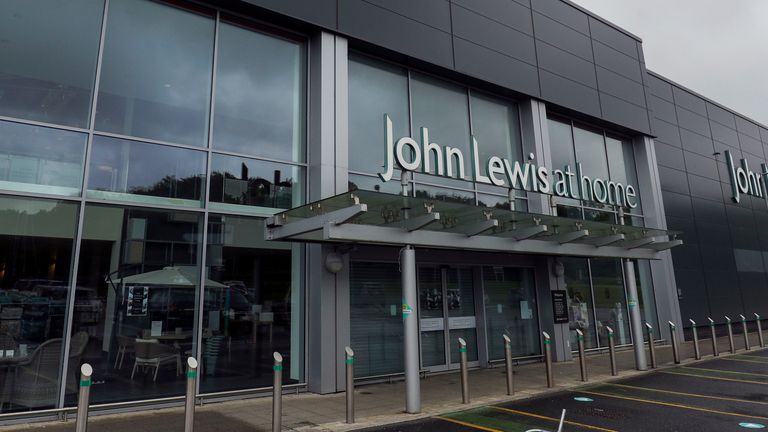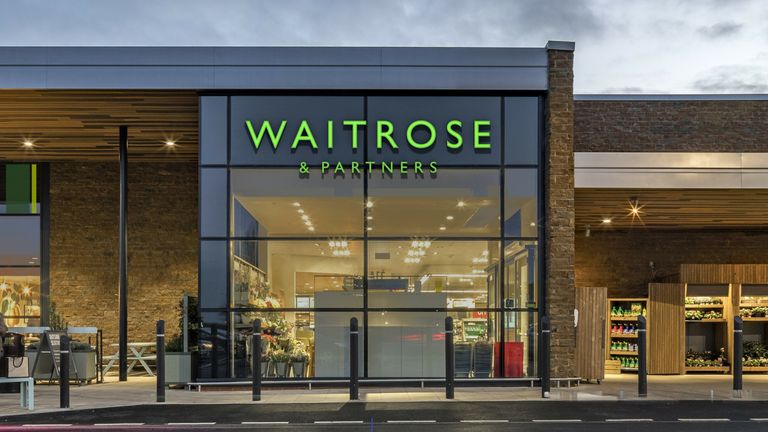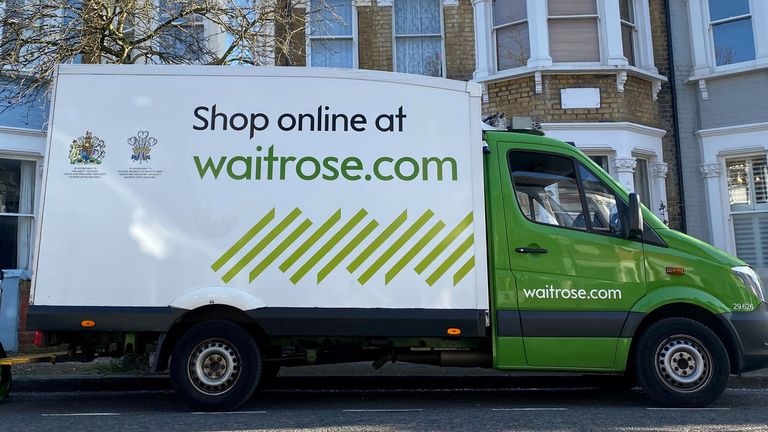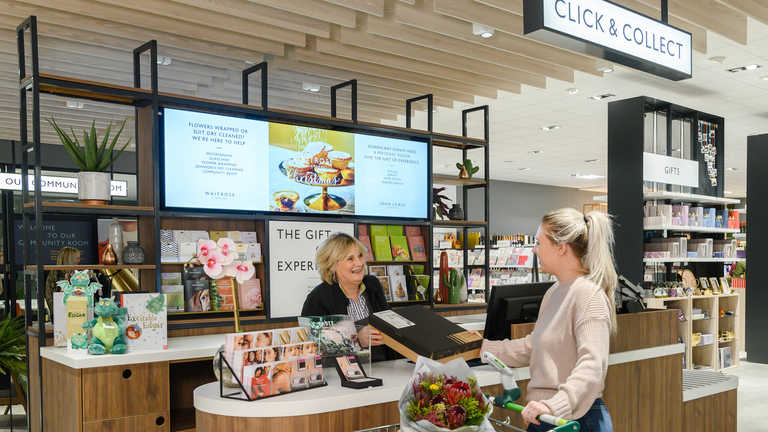There are at least three key messages that come from the store closures detailed by the John Lewis Partnership today.
The first underlines the extent to which a hurricane is blowing through physical retail as sales shift online.
The partnership, which also owns the Waitrose grocery chain, said today it now expects between 60-70% of John Lewis sales in future to be made online.
Simply not as much will come from physical retail in future.
It was telling that, when the partnership published its annual results a fortnight ago, total sales at John Lewis over the course of the year were down by just 2% on the previous 12 months – despite the fact that, for much of the last year, it was forced to close its shops.
John Lewis’s online operations made up for nearly all of the sales lost in-store.
In the light of that, the partnership has been re-thinking the contribution of the stores towards online sales and the extent to which they lead to customers spending online with John Lewis or not.
Dame Sharon White, the chair of the partnership, said at the time that, before the pandemic, the assumption was that shops contributed around £6 of every £10 spent online.
She said the partnership had now concluded that that figure was £3.
The consequences of this are clear and, especially when the government will be withdrawing business rates relief to retailers – something of which the partnership has availed itself – from the end of June.
The distorted playing field between online and physical retail means that even a city like Sheffield, with nearly 600,000 residents and wealthy suburbs like Fulwood and Hallam Head, can no longer support a profitable branch of John Lewis.
That will come as profoundly shocking to residents of south Yorkshire’s largest city, where John Lewis has had a presence since 1940, when the partnership bought the former Cole Brothers department store.
The outlet was so successful that John Lewis was one of the few big-name retailers to remain in Sheffield’s city centre when, in 1990, the giant out-of-town Meadowhall Centre opened.
No less shocking is the closure, after nearly 40 years, of the huge John Lewis store in Peterborough which, containing 125,000 square feet of space, is the biggest of the outlets today earmarked for closure.
John Lewis was the anchor tenant for the city’s Queensgate shopping centre which, a year after the store opened, was crowned the best in Europe by the International Council of Shopping Centres.
Likewise the closure of the 102,000 square foot store in Aberdeen, one of Scotland’s most prosperous cities, which has been there for 32 years.
The second message from today’s announcement, if we did not already know it, is that Dame Sharon clearly believes the breakneck expansion of John Lewis in the first 15 or so years of this century went too far.
At the time, John Lewis was just about the most revered name in British retail, a department store that could seemingly do no wrong at a time when rivals like Allders – and eventually, BHS, House of Fraser and Debenhams – were falling by the wayside.
With hindsight, it appears the partnership was too optimistic.
Much of the blame has been laid at the door of Andy Street, now the Conservative West Midlands mayor, who was managing director of John Lewis from 2007 to 2016.
During his period at the helm, no fewer than seven John Lewis department stores and 12 smaller John Lewis At Home stores were opened.
Many of these are now being closed.
They include, from the first wave of store closures last year, the ‘At Home’ outlets at Newbury, Tamworth and Swindon and, from today’s announcement, the ‘At Home’ stores at Tunbridge Wells, Ashford, Basingstoke and Chester.
They also include, from the first round of closures last year, the prestigious stores opened by Mr Street at Heathrow Terminal 2 and St Pancras International station, as well as the huge 130,000 square foot store at Birmingham’s Bullring centre, only opened in 2015, part of the Grand Central redevelopment around Birmingham New Street station.
Mr Street has called the closure “deeply disappointing” and “a dreadful mistake”.
In fact, of the eight stores whose closures were confirmed today, just three – Sheffield, Peterborough and Aberdeen – were not opened during Mr Street’s tenure.
There have been suggestions that morale within the partnership – and, in particular, at John Lewis – is poor.
That would hardly be surprising given recent trading.
But supporters of Dame Sharon will argue she is having to take tough decisions perhaps put off by her much-admired predecessor, Sir Charlie Mayfield, or to tackle problems caused by over-optimistic expansion by Mr Street.
The third message that comes out loud and clear is the value to the partnership of Waitrose.
It is not so long ago that Waitrose was being seen in some quarters as in trouble.
It too had appeared impregnable under Mr Street’s peer, the ebullient Mark (now Lord) Price, managing director from 2006 to 2016.
He tapped into a zeitgeist in which the provenance and quality of food was becoming ever more important.
The self-styled ‘Chubby Grocer’ was also street-wise enough to launch an ‘Essentials’ range to see off the growing threat from the German hard discounters Aldi and Lidl and also took Waitrose into the fast-growing convenience sector.
It was under his tenure that, for the first time in its history, Waitrose overtook Marks & Spencer for food sales.
But like Mr Street, Mr Price has also been accused of over-expanding, with Waitrose announcing the closure of five stores in 2016, six in 2017, five in 2018, seven in 2019 and four in 2020.
That reflected the fact that profits went into reverse from 2014 onwards as margins were eroded amid intense competition.
The loss of a two decade-old deal to supply online retailer Ocado, which switched to M&S, was also a wrenching blow.
Such were the headwinds that it has been widely speculated that, in 2018, Amazon approached the partnership about the possibility of buying Waitrose – only to be turned down.
The approach is something the partnership has always vehemently denied but, if it did rebuff Amazon, it looks to have been a wise decision.
Waitrose, in common with all of the major grocery multiples, has thrived during the pandemic.
Its operating profits during the year to the end of January 2021 rose by 7.7% to £1.1bn with its like-for-like sales rising by 10%.
The supermarket’s online arm is the fastest-growing in the market and its partnership with Deliveroo, which ironically is part-owned by Amazon, has also brought a younger group of customers to Waitrose for the first time.
And now Waitrose is looking fundamental to John Lewis’s future prospects.
Ever since the partnership bought Waitrose, in 1937, the grocer has often been run at arms-length from the department stores.
There has been rivalry on more than one occasion.
Yet those silos are breaking down.
Waitrose was already offering a ‘click and collect’ service for John Lewis customers and, at the height of the pandemic, more than 4,500 partners from the department stores were redeployed in Waitrose.
They have probably emerged from that experience with a better understanding of – and higher regard for – Waitrose.
Dame Sharon is now looking to introduce John Lewis shopping areas in a number of the larger Waitrose stores and, should trials prove successful, a roll-out to a “significant number” of the 331 Waitrose stores is promised.
It was no coincidence that, with today’s confirmation of store closures, the partnership provided details of the proximity to the closing branch not only of the next nearest John Lewis store but also the proximity of the nearest Waitrose outlet.
The closer ties between the two businesses will not come as much comfort to customers of the John Lewis stores today earmarked for closure and especially those in Aberdeen, Peterborough and Sheffield.
But they may yet lead to alternative employment for the 1,465 John Lewis partners affected by the news.






